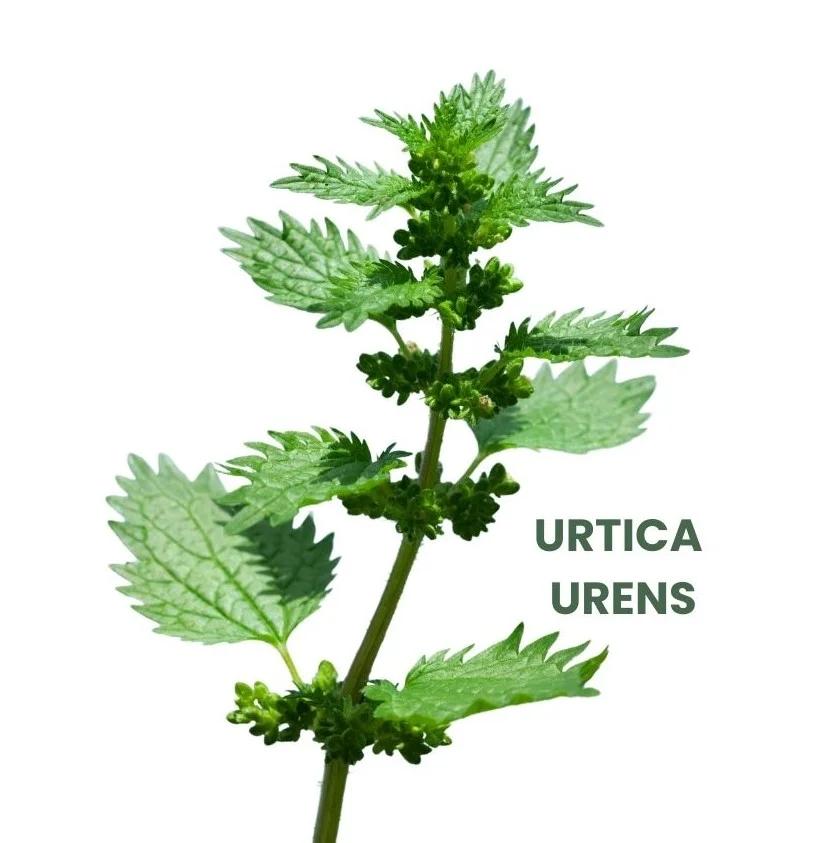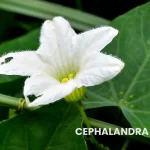Urtica Urens, commonly known as Stinging Nettle, is a remedy with a long history of use dating back to the writings of Dioscorides.
Dr. Burnett conducted extensive proving of this remedy, revealing its therapeutic potential in various conditions.
It is particularly renowned for its effects on the skin, mucous membranes, Genito-urinary organs, spleen, and joints.

Table of Contents
ToggleSOURCE INFORMATION
Scientific Classification
- Kingdom: Plantae
- Family: Urticaceae
- Genus: Urtica
- Species: Urtica urens
Origin
- Urtica Urens, commonly known as Stinging Nettle, is a perennial plant native to Europe, Asia, North Africa, and North America.
- It typically grows in temperate climates and can be found in fields, meadows, and along riverbanks.
- The plant has a long history of use in traditional medicine systems worldwide due to its medicinal properties.
Historical Facts
- Urtica Urens has a rich historical background and has been utilized for various purposes throughout the ages.
- It has been mentioned in ancient texts, including the writings of Dioscorides, a Greek physician and pharmacologist, who praised its medicinal benefits.
- Over the centuries, different cultures have employed Urtica Urens for its therapeutic properties, considering it a valuable herb for cleansing and healing purposes.
- The plant has also been used as a source of food, with its young leaves being consumed as a nutritious vegetable in many culinary traditions.
Homoeopathic Application
- In homeopathy, Urtica Urens is a valuable remedy with a diverse range of therapeutic indications.
- It is primarily indicated for conditions affecting the skin, mucous membranes, genito-urinary organs, spleen, and joints.
- Urtica Urens is used to address symptoms such as urticaria (hives), burns, gout, rheumatism, uterine hemorrhage, excoriating leucorrhea, and diminished milk secretion.
- The remedy is prepared using the fresh leaves of the Urtica Urens plant through a process of potentization, which involves successive dilution and succussion (vigorous shaking) to create the final homeopathic remedy.
- Homeopaths prescribe Urtica Urens in various potencies, including tincture and lower potencies, based on the individual’s symptoms and the nature of the condition being treated.
DRUG PATHOGENESIS
- Urtica Urens acts primarily on the skin, mucous membranes, Genito-urinary organs, spleen, and joints.
- It is indicated for conditions such as agalactia, lithiasis, enuresis, urticaria, spleen affections, and gout.
- The remedy favours elimination and helps alleviate symptoms associated with rheumatism, neuritis, and urological issues.
KEY CHARACTERISTICS
Urticaria
- Symptoms: Burning, stinging, and intense itching of the skin.
- Unique Characteristic: Urticaria disappears when lying down but reappears upon getting up.
- Relationship with Rheumatism: Urticaria may precede rheumatic symptoms, accompanied by fever.
- Aggravation: Burning sensation in the skin worsens after sleep.
Burns
- Usage: Effective for treating “first-degree burns” both topically and internally.
- Importance: Considered even before Cantharis in burn cases.
Rheumatism and Gout
- Symptoms: Rheumatism alternates with urticaria; tendency towards uric acid diathesis.
Acute Gout with Fever
- Application: Used in acute gout episodes associated with fever.
Ailments from Various Causes
- Burns, bee stings, exposure to cold or damp conditions (flows), suppression of milk, suppression of nettle rash, and adverse effects of consuming shellfish and experiencing nettle rash.
Effects on the Genito-Urinary Organs
- It is indicated for conditions like agalactia, uterine haemorrhage, and excoriating leucorrhoea.
Impact on the Spleen and Joints
- Urtica Urens helps address spleen affections and rheumatism, especially when associated with urticaria-like eruptions.
Seasonal Aggravations
- Symptoms may recur at the same time every year, indicating a seasonal influence on the remedy’s action.
DETAILED ORGAN SYMPTOMS
SKIN
Itching Blotches
- Red, irritated patches of skin that provoke a strong desire to scratch.
Urticaria
- Skin rash characterized by raised, red, itchy welts or hives.
- Burning heat accompanies the rash, along with a sensation of crawling or tingling (formication).
- Itching is intense and may be accompanied by a sensation of violent itching, leading to scratching.
Consequences of Suppressed Nettle-Rash
- Refers to symptoms arising from the suppression or incomplete resolution of a previous episode of urticaria or nettle rash.
- These consequences may include worsening of skin conditions or the emergence of other symptoms.
Rheumatism Alternating with Nettle-Rash
- Rheumatic pains in the joints or muscles that alternate with episodes of nettle-rash or urticaria.
Burn Confined to Skin
- Refers to burns that affect only the superficial layers of the skin, causing redness, pain, and inflammation without blistering or deeper tissue damage.
Urticaria Nodosa
- Form of urticaria characterized by the presence of nodules or raised bumps on the skin, which may be itchy and tender.
Erythema with Burning and Stinging
- Redness of the skin accompanied by a sensation of burning and stinging.
Burns and Scalds
- Injuries to the skin caused by heat, resulting in redness, pain, and sometimes blistering.
Chickenpox
- Viral infection characterized by a widespread rash of itchy, fluid-filled blisters (vesicles) on the skin.
Angioneurotic Oedema (Angioneurotic Oedema)
- Swelling of the deeper layers of the skin and underlying tissues, often around the eyes, lips, and throat, due to an allergic reaction.
Herpes Labialis with Sensation of Heat and Itching
- Cold sores or fever blisters on or around the lips, accompanied by a sensation of heat and itching.
Itching and Stinging of Scrotum
- Uncomfortable sensations of itching and stinging in the skin of the scrotum, often accompanied by redness or irritation.
FEMALE
- Diminished secretion of milk.
- Uterine haemorrhage.
- Acidic and corrosive leucorrhoea.
- Pruritus vulvae (itching of the external female genitalia) with stinging, itching, and swelling (oedema).
- Halt in the flow of milk post-weaning.
- Excessive swelling of the breasts.
EXTREMITIES
- Pain in the deltoid muscle in cases of acute gout.
- Pain in the ankles and wrists.
MODALITIES
Aggravated by
- Cool Moist Air: Symptoms worsen in environments with cool and humid conditions.
- Cold Bathing: Aggravation of symptoms occurs after exposure to cold water or bathing in cold water.
- Touch: Symptoms are exacerbated by physical contact or pressure on affected areas.
- Yearly Recurrence: Symptoms tend to recur at the same time each year, indicating a seasonal pattern of aggravation.
Worse from
- Snow-Air: Symptoms worsen in cold and snowy weather conditions.
- Water: Aggravation of symptoms occurs after exposure to water, particularly cold water.
- Cool Moist Air: Symptoms exacerbate in environments with cool and damp air.
Better from
- Warmth: Symptoms improve in warm environments or with the application of warmth, such as warm clothing or heating pads.
WHAT ARE MODALITIES IN HOMEOPATHY?
RELATIONSHIP WITH OTHER DRUGS
Medusa
- Urtica Urens is compared to Medusa in terms of their relationship due to their similarities in symptoms related to skin conditions like urticaria.
Natrum Muriaticum (Nat. mur.)
- Both Urtica Urens and Nat. mur. are indicated for conditions involving diminished mammary secretion.
- They may share similarities in emotional symptoms like grief and introversion.
Lac Caninum (Lac. can.)
- can. and Urtica Urens might be compared for their potential effects on breast-related symptoms and skin conditions.
Ricinus communis (Ricin)
- Both remedies may share indications for diminished mammary secretion, suggesting a similarity in their action on lactation issues.
Bombyx
- Bombyx and Urtica Urens could be compared for their potential effects on skin conditions, especially urticaria.
Rhus toxicodendron (Rhus)
- Rhus and Urtica Urens both have associations with urticaria and rheumatism, indicating potential similarities in their effects on these conditions.
Apis mellifica (Apis)
- Both remedies might share indications for urticaria and burning, stinging sensations, especially related to the skin.
Chloralum hydratum (Chloral.)
- and Urtica Urens might have similarities in their effects on the nervous system and skin conditions.
Astacus fluviatilis (Astac.)
- and Urtica Urens could share indications for skin conditions and possibly urinary tract issues.
Pulsatilla (Puls.)
- and Urtica Urens may share indications for urticaria, especially in females, and emotional symptoms like weepiness and changeable moods.
Boletus luridus and Anacardium (urticaria tuberosa)
- These remedies might be compared to Urtica Urens for their potential effects on specific types of urticaria with tuberous eruptions.
Lycopodium and Hedeoma (uric acid conditions):
- Lycopodium and Hedeoma are compared to Urtica Urens for their potential effects on conditions related to uric acid metabolism, such as gout.
Formica
- Formica and Urtica Urens could share indications for conditions like gout and rheumatism, especially when associated with skin symptoms.
DOSE
- Urtica Urens is typically administered in tincture form or lower potencies.
Meaning of difficult words
- Dioscorides: A Greek physician and pharmacologist who authored “De Materia Medica,” a comprehensive pharmacopeia that described numerous medicinal plants and their uses.
- Therapeutic: Relating to the treatment of disease or disorders; having healing properties.
- Agalactia: The inability or failure to produce sufficient milk in lactating females.
- Lithiasis: The formation of stones or calculi within the body, often referring to conditions like kidney stones or gallstones.
- Mucous membranes: Moist linings of various body cavities and organs, such as the respiratory tract, digestive tract, and reproductive tract, which produce mucus to protect and lubricate the surfaces.
- Enuresis: Involuntary urination, particularly during sleep; bedwetting.
- Spleen: An organ located in the upper left abdomen, involved in filtering blood, storing blood cells, and fighting infection.
- Diathesis: A predisposition or tendency to develop a particular condition or disease.
- Rheumatism: A general term for conditions characterized by pain, stiffness, and inflammation in the joints, muscles, or connective tissues.
- Neuritis: Inflammation of one or more nerves, typically causing pain, tingling, or numbness.
- Urticaria: Also known as hives, a skin condition characterized by raised, itchy welts or bumps.
- Excoriating: Causing irritation or abrasion to the skin or mucous membranes.
- Leucorrhoea: A discharge of white or yellowish mucus from the vagina, often indicating infection or inflammation.
- Pruritus vulvae: Itching of the external female genitalia.
- Oedema: Swelling caused by fluid retention in the body’s tissues.
- Deltoid muscle: A large muscle located in the shoulder that allows for arm movement and stability.
- Angioneurotic oedema: Also known as angioedema, a condition characterized by rapid swelling of the deeper layers of the skin and mucous membranes.
- Herpes labialis: Cold sores or fever blisters that develop around the lips or mouth due to infection with the herpes simplex virus.
- Scrotum: The pouch of skin containing the testicles in males.
- Potentization: A process in homeopathy involving dilution and succussion (vigorous shaking) of a substance to create a highly diluted remedy with therapeutic effects.
- Tincture: A concentrated herbal extract made by soaking plant material in alcohol or a mixture of alcohol and water.
- Calculation: Another term for stones or solid masses formed in the body, often referring to conditions like kidney stones or gallstones.
- Pharmacopeia: A book or manual containing a comprehensive list of medicinal drugs along with their descriptions, uses, and preparation methods.













Leave a Reply